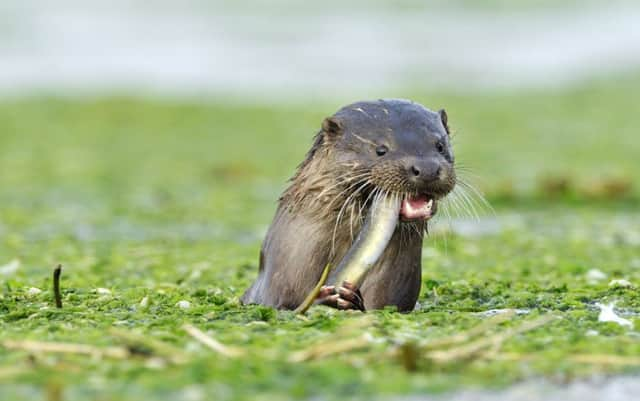Book review: Otters: Return to the River


Otters: Return To The River
By Laurie Campbell & Anna Levine
Birlinn, 128pp, £14.99
As the book’s alternating first person accounts by Campbell and writer Anna Levin explain, this also requires hours, days and sometimes nights spent in cramped concealment, and an intuitive understanding of your subject.
Campbell’s images range from such crystalline studies as fractal-like blades of hoar frost on gorse spines or a mayfly on a grass stem etched against a rising moon, to his shot of an otter diving through a brown sunlit pool that is as near-abstract as a pattern in polished burr elm. There are landscapes, too, of a winter-stilled Whiteadder Water or a Tir-na-Nog-like sunset over Ardnamurchan.
Advertisement
Hide AdThe otter, however, is the presiding genius here, and while Levin’s words warmly document Campbell’s methods and sensibility, it is, inevitably, the photographs that stand out, capturing otters in classic Loch Ness Monster formation of sleekit humps, or coursing unconcernedly under a bridge in Berwick-upon-Tweed amid Saturday afternoon traffic. Another surfaces under cover of seaweed to closely scrutinise Campbell, despite his camouflage netting – the watcher watched.
By the late 1970s, Lutra lutra, the Eurasian otter, had disappeared from most of Britain, thanks largely to agricultural chemicals in the food chain. By 2012, legislation had helped it re-colonise almost two-thirds of its former sites – including Campbell’s home “beat” of the Tweed and its tributaries.
Otters, therefore, is not only a visual testimony to Campbell’s ability, as Sir John Lister-Kaye says in his foreword, “to slough off human-ness and blend seamlessly and invisibly into the wild world”, but a heartening picture of the return of a species.
Laurie Campbell will be appearing at the Edinburgh book festival on 23 August along with Patrick Barkham, the author of Badgerlands.